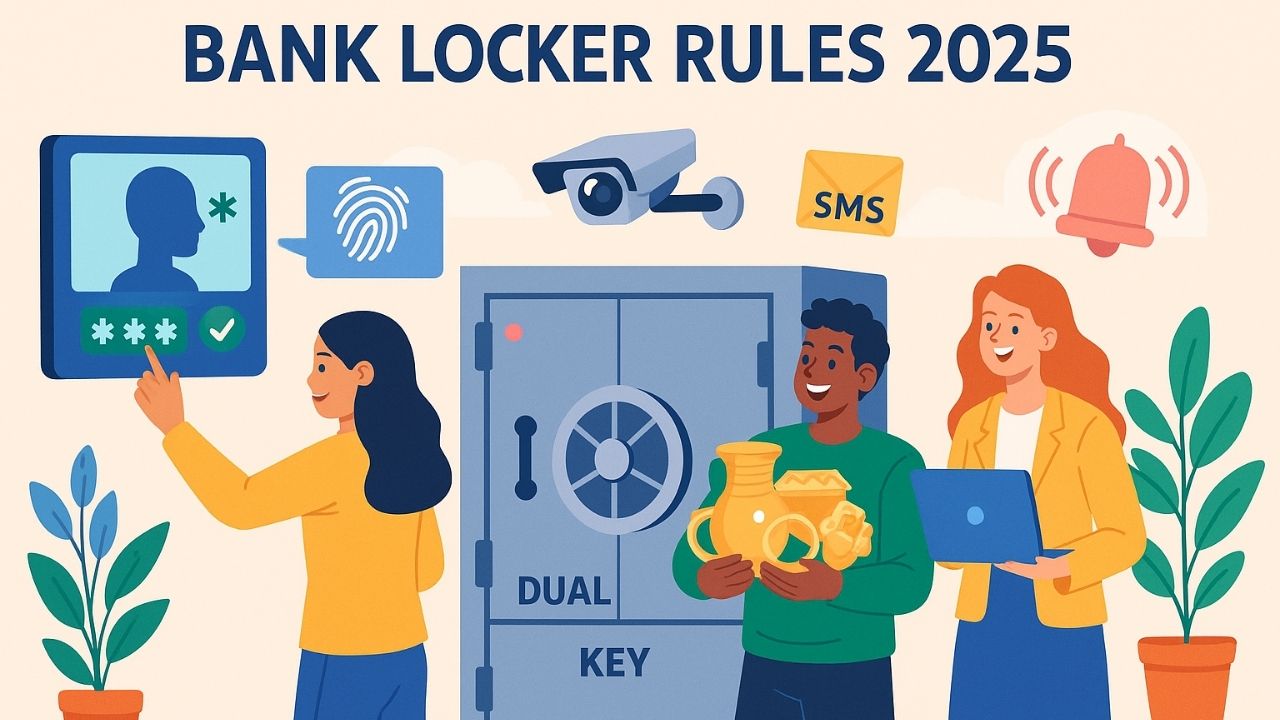The Reserve Bank of India (RBI) has implemented a new set of regulations for bank lockers effective from January 1, 2025. These rules are aimed at enhancing the safety and transparency of locker services across all banks. With updated security protocols, clearly defined rental pricing, and standard locker agreements, the revised guidelines bring uniformity and accountability to locker operations.
The move comes in response to rising concerns over locker misuse, theft, and non-transparent charges. The RBI’s goal is to create a structured environment where customers know their rights and banks operate under well-defined responsibilities. These reforms are expected to improve customer confidence and align locker operations with modern security expectations.
Enhanced Security and Access Control
A key highlight of the 2025 rules is the focus on improving physical and digital security. All banks are now required to install biometric access systems for locker rooms. Customers can only access their lockers after fingerprint or retina scan verification, along with their physical keys.
Locker rooms must be under 24×7 CCTV surveillance. The footage will be retained for at least 180 days and used as evidence if needed. The dual-key system, where both the bank and the customer use their keys to open a locker, remains mandatory. This ensures that no locker is accessed without mutual consent.
Additionally, customers will now receive SMS and email alerts each time their locker is accessed. These real-time notifications increase transparency and allow quick reporting if unauthorized access occurs.
Locker Agreement and Customer Liability
All locker users must sign a standardized locker agreement provided by the bank. This document clearly outlines the responsibilities of both the bank and the customer. The agreement ensures that banks maintain security and operational infrastructure, while customers use the locker for lawful and personal storage only.
The agreement also covers situations such as the death or incapacitation of the locker holder. In such cases, the locker can be accessed by a nominee or legal heir, as specified in the agreement. Customers are advised to register a nominee to avoid legal complications.
Importantly, banks are not responsible for the contents of the locker. However, they are liable if loss occurs due to negligence, such as poor maintenance, security lapses, or unauthorized access by bank staff.
Transparent Pricing Structure
To standardise rental charges, the RBI has instructed banks to fix locker fees based on locker size and branch location. The charges must be publicly displayed at all branches and on bank websites. This ensures transparency and eliminates hidden fees.
Below is an indicative table of locker charges across different categories:
| Locker Size | Approx. Dimensions | Rural/Semi-Urban (₹) | Urban/Metro (₹) |
|---|---|---|---|
| Small | 6” x 6” | ₹1,500 – ₹2,000 | ₹2,500 – ₹3,000 |
| Medium | 10” x 10” | ₹3,000 – ₹4,500 | ₹5,000 – ₹6,000 |
| Large | 12” x 12” or more | ₹6,000 – ₹8,000 | ₹10,000 – ₹12,000 |
Compensation in Case of Loss
The new rules clarify the compensation customers are entitled to in case of locker content loss due to bank negligence. The RBI has fixed the maximum compensation at 100 times the annual locker rent. Compensation will be offered in the following cases:
- Theft or burglary due to poor security measures
- Fire or flood damage caused by faulty infrastructure
- Unauthorised access due to staff misconduct
Claims must be settled within 30 to 60 days after proper verification.
Locker Usage and Dormancy Policy
To keep lockers active and in proper use, customers must operate them at least once every three years. If no activity is recorded, the locker may be considered dormant. In such cases, the bank will issue a notice, and if there’s no response, it can initiate the process of breaking open the locker, following due legal procedures.
In the event of the customer’s death, the locker will be accessible to the nominee or legal heir after documentation and verification.
Permissible and Prohibited Items
While banks do not inspect locker contents, certain guidelines have been issued on permissible use. Items allowed include jewellery, legal documents, and financial instruments. Storing cash, firearms, explosives, or perishable items is strictly prohibited. Any misuse may result in the termination of the locker facility.
